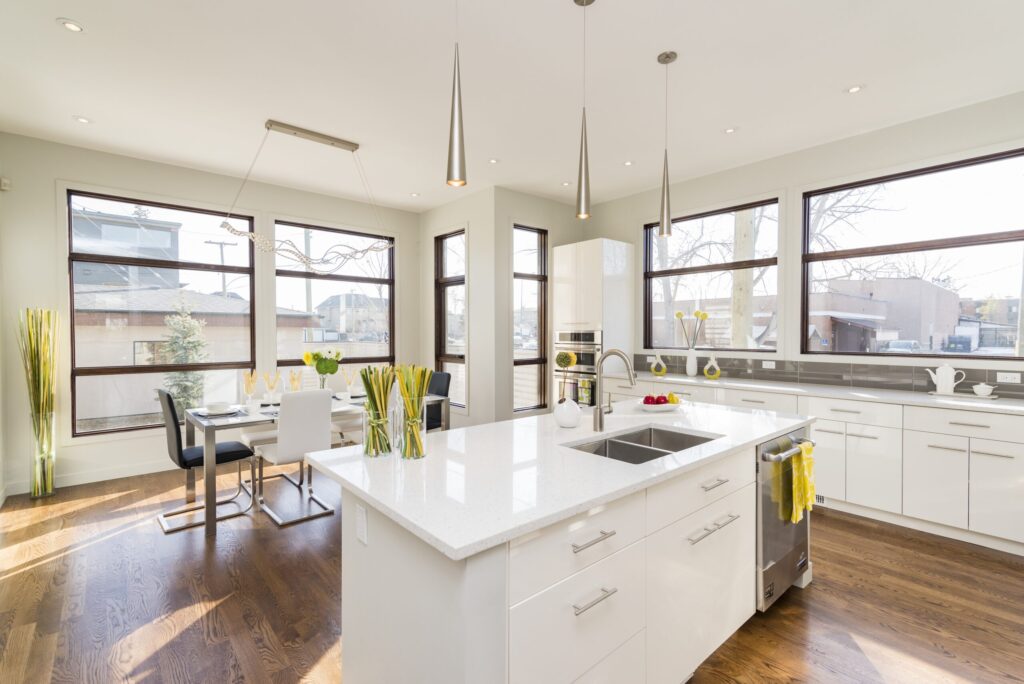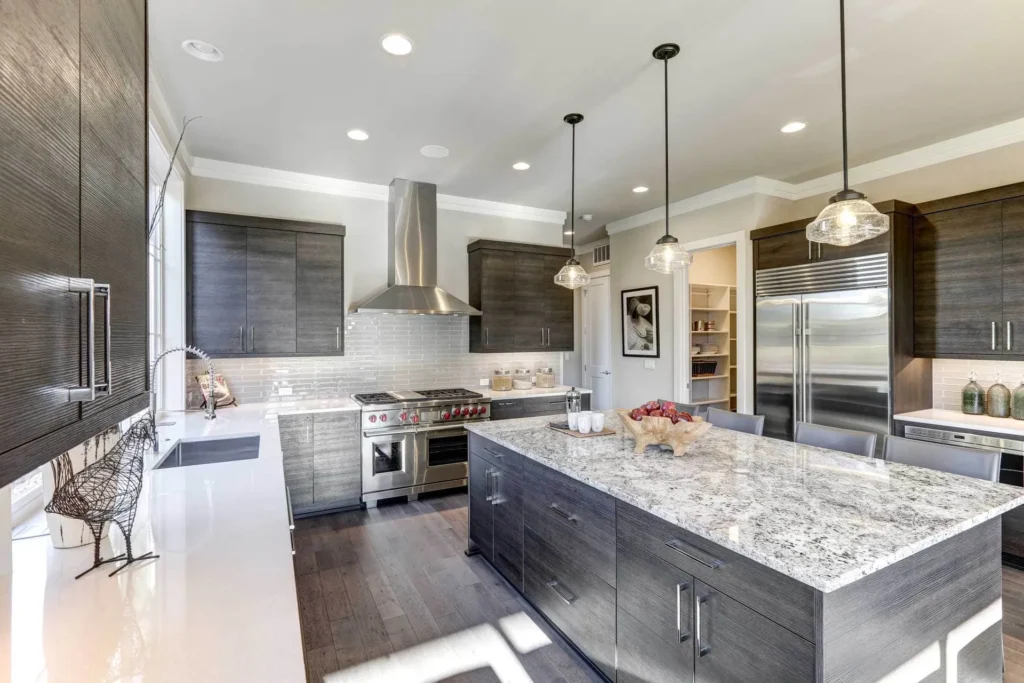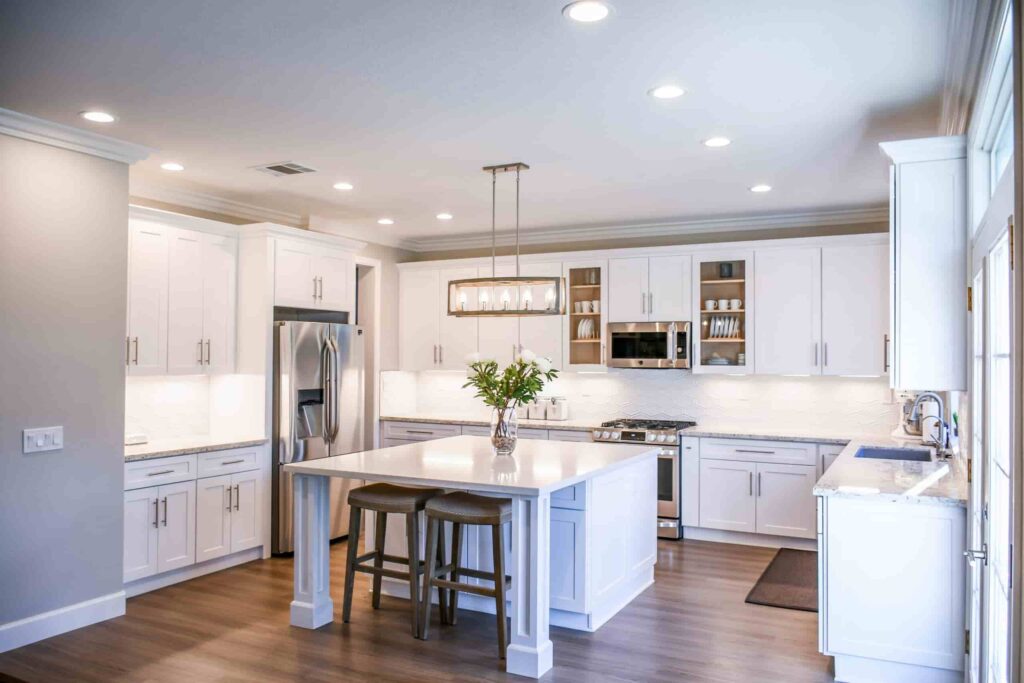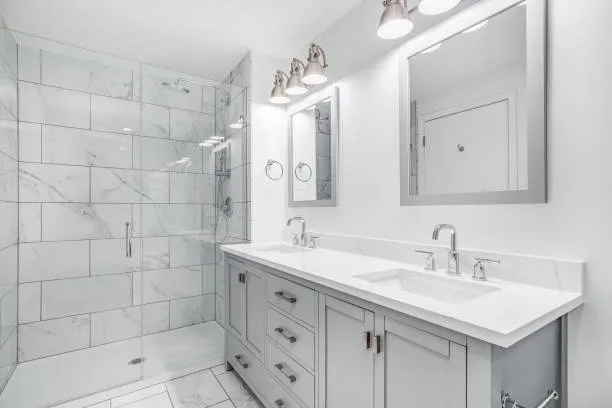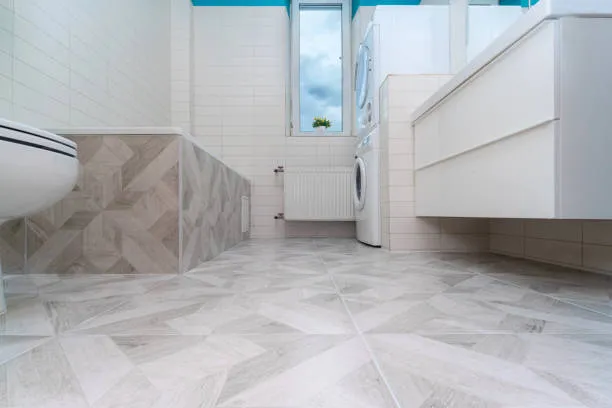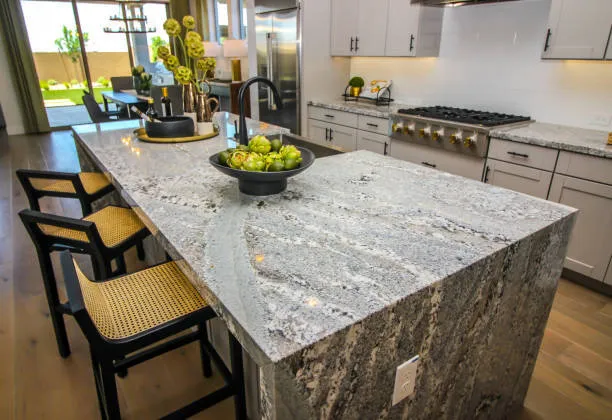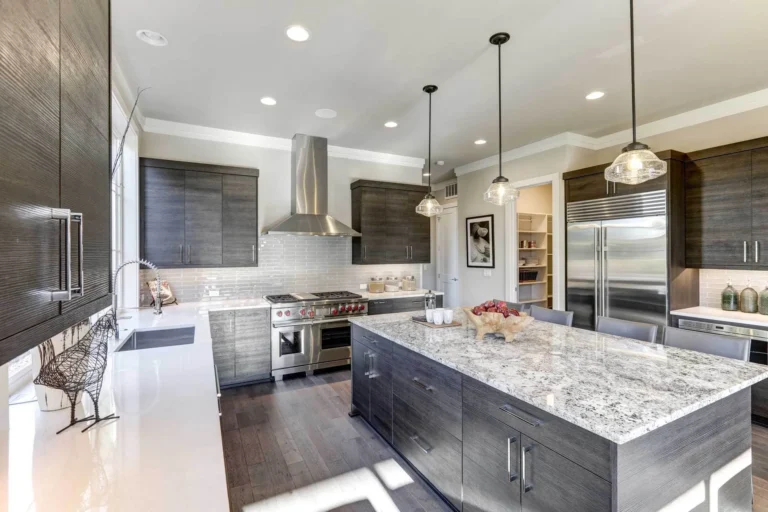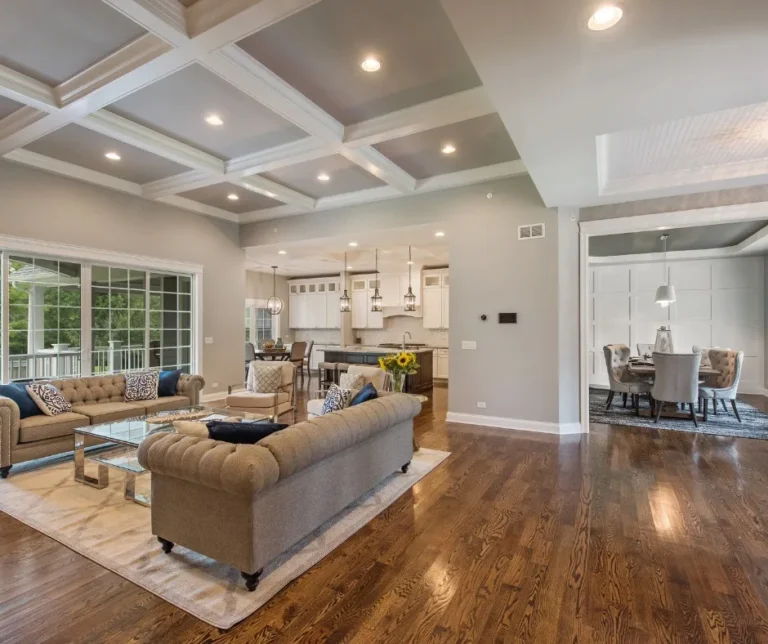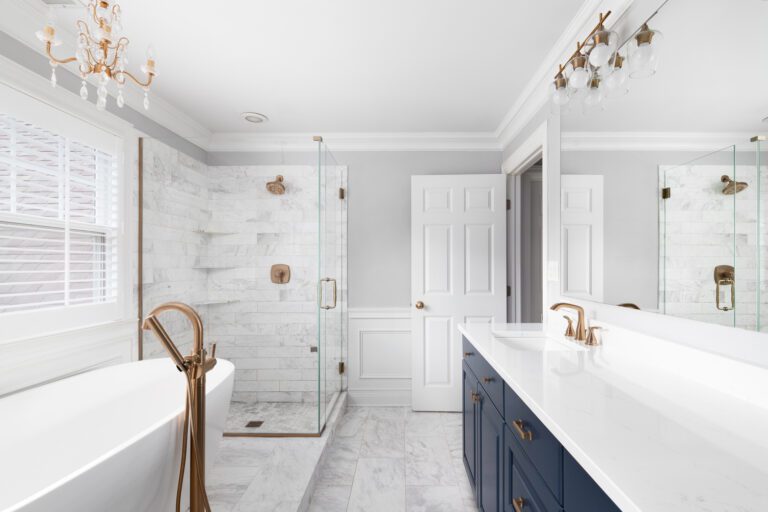YOU’VE GOT QUESTIONS…WE’VE GOT ANSWERS
FAQs
Answers to your most frequently asked Kitchen & Bathroom Remodeling Questions
What is the first thing to do when remodeling a kitchen?
Here is the most common order of events for a major kitchen remodel that involves total gutting (a minor remodel would involve fewer steps which would depends on what you change and what you keep but, keep in mind, each project is unique, and a remodeler may have good reason to deviate slightly from the steps below.
1. Tear Out and Demolition
2. Rough-In Work Including Framing and Plumbing
3. Professional Inspection
4. Finishing The Walls
5. Install Doors and Windows
6. Install Cabinets & Fixtures
7. Install New Appliances
8. Install New Flooring
Do You Install Tile Floors or Cabinets First?
If you want the classic look of ceramic or porcelain tile in your kitchen, you can have tile installed either before or after your cabinetry. With tile going in before the cabinets, you need more square feet of tile, but the installation process will be easier on an unobstructed surface. You also get flexibility if you decide to get a new cabinetry layout later but keep your tile floors.
Installing tile after your cabinets means you don’t need as much flooring material. Installers will cut tiles and detail areas around your cabinets, though. With a tile installation around your cabinets, you may not have as much flexibility with your cabinet layout later on. You do, however, get flexibility with your flooring and cut down on the risk of cabinet installers damaging your tile floor.
Is remodeling a kitchen worth it?
People say kitchens sell houses.
“It’s the center of the home,” explains Elle H-Millard, CKD, industry
relations manager and resident designer for the National Kitchen & Bath
Association (NKBA). “People want to be relaxed in this space. People congregate here, and you want a good feeling in this environment.“
Depending on the size of the project, you’ll recoup 54% to 77% of what you spend on a kitchen remodel.
What should you not forget when remodeling a kitchen?
Avoiding these common kitchen renovation pitfalls will save you time and money.
- Forgetting Your Budget
- Not Taking Inventory of Your Kitchen
- Not Layering Lighting
- Not Considering Clearances
- Not Planning Out Your Storage
- Forgetting Electrical Elements
- Ignoring Your Home’s Bones
- Renovating Alone
- Not Being Strategic About Appliance Placement
- Basing Your Remodel on Trends
Why remodeling a bathroom is expensive?
There are many reasons why a bathroom remodel may cost more than you think, including: inefficient layouts, complex plumbing systems, outdated design features and materials, high-end fixtures and appliances.
Does a Bathroom Renovation Increase Home Value?
It sure does! On average, homeowners spend just over $20,000 on a midrange bathroom renovation project, and nearly $65,000 on an upscale bathroom renovation project. At resale, midrange renovations recoup 67.2% of their costs, while upscale renovations recoup 60.2%.
What are the hardest part of remodeling bathroom?
The hardest parts of a bathroom remodel are knowing where to start, planning and performing demolition, minimizing dust, visualizing the finish line, living with the inconvenience of not being able to use that bathroom, and managing the schedule. That’s the quick answer. Now let’s discuss each of these challenges in more detail.
How much value does a bathroom remodel add?
In general, the metric that experts use to determine how much value a renovation project adds isn’t a flat dollar amount but the percentage of the upfront cost the owner is likely to recoup when they sell the house.
According to a 2023 cost vs. value report by Remodeling, the return on investment for a bathroom remodel depends on the updates you make. Keep in mind that returns aren’t guaranteed and that they may differ from the national average based on where you live and local market conditions.
The report includes the average cost of five different bathroom remodels:
Midrange bathroom remodel — A 67% return
Upscale bathroom remodel — A 37% return
Universal design bathroom — This
type of remodel uses designs that make it accessible to people with
disabilities & average a 46% return.
Bathroom addition (midrange) — A 30% return.
Bathroom addition (upscale) — A 27% return.









